
The history of Finland begins around 9,000 BC during the end of the last glacial period. Stone Age cultures were Kunda, Comb Ceramic, Corded Ware, Kiukainen, and Pöljä cultures. The Finnish Bronze Age started in approximately 1,500 BC and the Iron Age started in 500 BC and lasted until 1,300 AD. Finnish Iron Age cultures can be separated into Finnish proper, Tavastian and Karelian cultures. The earliest written sources mentioning Finland start to appear from the 12th century onwards when the Catholic Church started to gain a foothold in Southwest Finland.

The Winter War was a war between the Soviet Union and Finland. It began with a Soviet invasion of Finland on 30 November 1939, three months after the outbreak of World War II, and ended three and a half months later with the Moscow Peace Treaty on 13 March 1940. Despite superior military strength, especially in tanks and aircraft, the Soviet Union suffered severe losses and initially made little headway. The League of Nations deemed the attack illegal and expelled the Soviet Union.

Juho Kusti Paasikivi was a Finnish politician who served as the seventh president of Finland from 1946 to 1956. Representing the Finnish Party until its dissolution in 1918 and then the National Coalition Party, he previously served as senator, member of parliament, envoy to Stockholm (1936–1939) and Moscow (1940–1941), and Prime Minister of Finland. He also held several other positions of trust, and was an influential figure in Finnish economics and politics for over fifty years.

The Finns Party, formerly known as the True Finns, is a right-wing populist political party in Finland. It was founded in 1995 following the dissolution of the Finnish Rural Party.
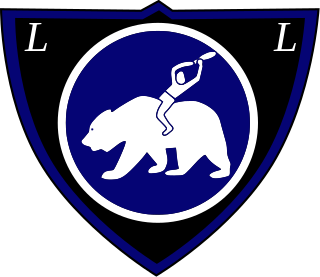
The Lapua Movement was a radical Finnish nationalist, fascist, pro-German and anti-communist political movement founded in and named after the town of Lapua. Led by Vihtori Kosola, it turned towards far-right politics after its founding and was banned after a failed coup d'etat attempt in 1932. The movement's anti-communist activities continued in the parliamentarian Patriotic People's Movement.

The Moscow Peace Treaty was signed by Finland and the Soviet Union on 12 March 1940, and the ratifications were exchanged on 21 March. It marked the end of the 105-day Winter War, upon which Finland ceded border areas to the Soviet Union. The treaty was signed by Vyacheslav Molotov, Andrei Zhdanov and Aleksandr Vasilevsky for the Soviet Union, and Risto Ryti, Juho Kusti Paasikivi, Rudolf Walden and Väinö Voionmaa for Finland. The terms of the treaty were not reversed after the dissolution of the Soviet Union. The Karelian question refers to the debate within Finland over the possible reacquisition of this ceded territory.
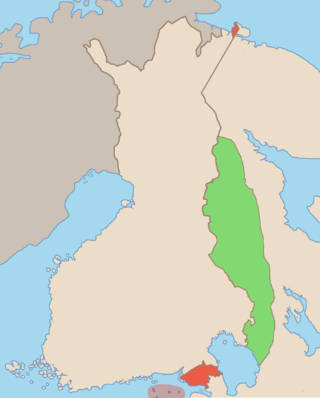
The Finnish Democratic Republic, also known as the Terijoki Government, was a short-lived communist puppet state of the Soviet Union in occupied Finnish territory from December 1939 to March 1940.
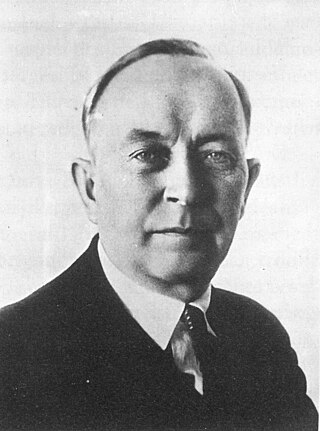
Otto Wilhelm "Wille" Kuusinen was a Finnish-born Soviet communist and, later, Soviet politician, literary historian, and poet who, after the defeat of the Reds in the Finnish Civil War, fled to the Soviet Union, where he worked until his death. He briefly led the so-called Finnish Democratic Republic before serving as Chairman of the Presidium of the Supreme Soviet of the Karelo-Finnish SSR.
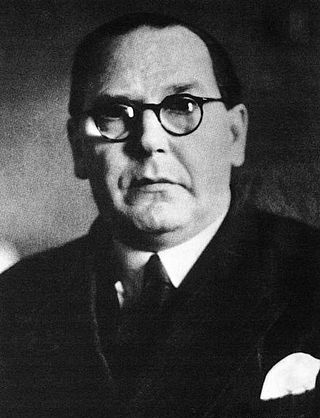
Karl-August Fagerholm was a Finnish politician. Fagerholm served as Speaker of Parliament and three times Prime Minister of Finland. Fagerholm became one of the leading politicians of the Social Democrats after the armistice in the Continuation War. As a Scandinavia-oriented Swedish-speaking Finn, he was believed to be more to the taste of the Soviet Union's leadership than his predecessor, Väinö Tanner. Fagerholm's postwar career was, however, marked by fierce opposition from both the Soviet Union and the Communist Party of Finland. He narrowly lost the presidential election to Urho Kekkonen in 1956.

The Winter War was fought in the four months following the Soviet Union's invasion of Finland on 30 November 1939. This took place three months after the German invasion of Poland that triggered the start of World War II in Europe. Sweden did not become actively involved in the conflict, but did indirectly support Finland. The Swedish Volunteer Corps provided 9,640 officers and men. The Swedish Voluntary Air Force also provided 25 aircraft that destroyed twelve Soviet aircraft while only losing six planes with only two to actual enemy action and four to accidents. Sweden also provided a portion of the weapons and equipment used by the Finns throughout the war.

Finland participated in the Second World War initially in a defensive war against the Soviet Union, followed by another, this time offensive, war against the Soviet Union acting in concert with Nazi Germany and then finally fighting alongside the Allies against Germany.
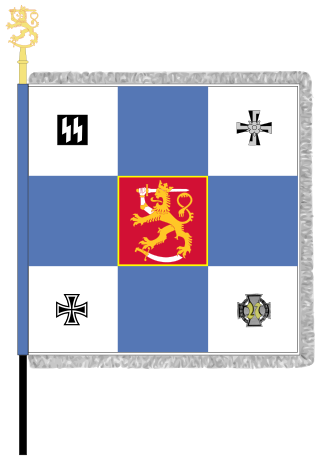
From 1941 to 1943, 1,408 Finns volunteered for service on the Eastern Front of World War II in the Waffen-SS, in units of the SS Division Wiking. Most of these volunteers served as motorized infantry in the Finnish Volunteer Battalion of the Waffen-SS. The unit was disbanded in mid-1943 as the volunteers' two-year commitment had expired and the Finnish government was unwilling to allow more men to volunteer. In 1944-1945 a company sized unit of Finnish defectors recruited to the SS continued fighting alongside Germany.
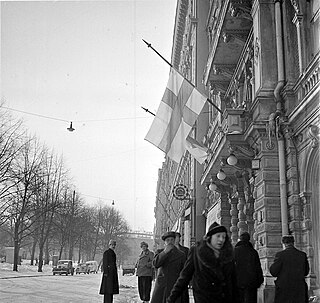
The Interim Peace was a short period in the history of Finland during the Second World War. The term is used for the time between the Winter War and the Continuation War, lasting a little over 15 months, from 13 March 1940 to 24 June 1941. The Moscow Peace Treaty was signed by Finland and the Soviet Union on 12 March 1940 and it ended the 105-day Winter War.

The Finnish Defence Intelligence Agency is the combined signals (SIGINT), geospatial (GEOINT) and imagery intelligence (IMINT) agency of the Finnish Defence Forces. Operational since 2014, its responsibility is to support the defence of Finland through information gathering and analysis as an intelligence agency, organic to the Intelligence Division of Defence Command.

Relations between Finland and Russia have been conducted over many centuries, from wars between Sweden and Russia in the early 18th century, to the planned and realized creation and annexation of the Grand Duchy of Finland within the Russian Empire during Napoleonic times in the early 19th century, to the dissolution of the personal union between Russia and Finland after the forced abdication of Russia's last czar in 1917, and subsequent birth of modern Finland. Finland had its own civil war with involvement by Soviet Russia, was later invaded by the USSR, and had its internal politics influenced by it. Relations since then have been both warm and cool, fluctuating with time.
The background of the Winter War covers the period before the outbreak of the Winter War between Finland and the Soviet Union (1939–1940), which stretches from the Finnish Declaration of Independence in 1917 to the Soviet-Finnish negotiations in 1938–1939.
The timeline of the Winter War is a chronology of events leading up to, culminating in, and resulting from the Winter War. The war began when the Soviet Union attacked Finland on 30 November 1939 and it ended 13 March 1940.
The aftermath of the Winter War covers the historical events and views following the Winter War between Finland and the Soviet Union from 30 November 1939 to 13 March 1940.

The Social Democratic Party of Finland is a social democratic political party in Finland. It is the third largest party in the Parliament of Finland with 43 seats.

In Finland, the far right was strongest in 1920–1940 when the Academic Karelia Society, Lapua Movement, Patriotic People's Movement (IKL) and Export Peace operated in the country and had hundreds of thousands of members. In addition to these dominant far-right and fascist organizations, smaller Nazi parties operated as well.
















